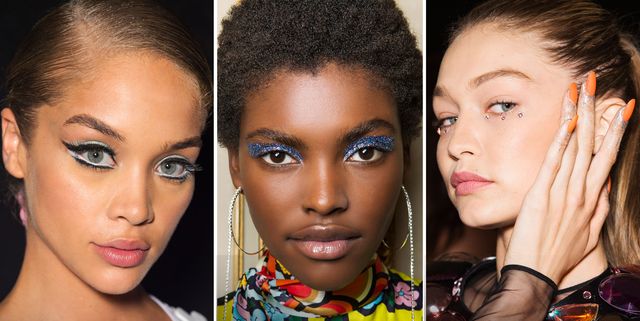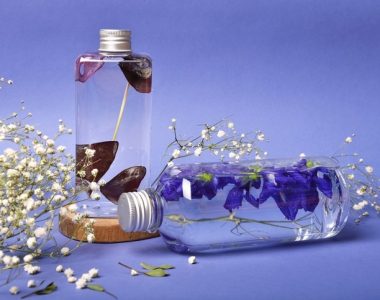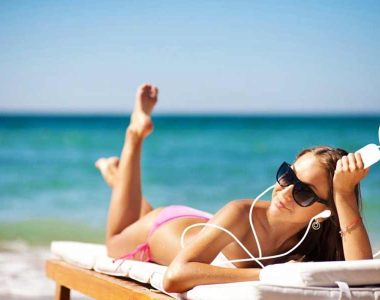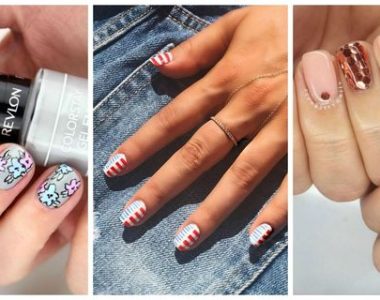
Introduction
Beauty and fashion are dynamic expressions of self, continually evolving and reflecting the cultural, social, and technological shifts of our time. This comprehensive guide explores the intricate world of beauty trends and fashion, delving into the history, the impact of technology, sustainable practices, and the psychology behind the choices people make in their pursuit of personal style and beauty.
Section 1: The Evolution of Beauty and Fashion
Historical Context
Beauty and fashion trends have been central to human culture for centuries. From ancient civilizations to contemporary societies, the way people present themselves has always held cultural and social significance. Explore the historical context of beauty and fashion trends, from ancient Egypt’s kohl-lined eyes to the flamboyant styles of the Renaissance and the roaring ’20s.
Ancient Beauty Rituals
In ancient civilisations, beauty practices often carried deep cultural and religious significance. From the elaborate hairstyles of ancient Egypt to the use of natural pigments and dyes in India, these practices were intrinsically linked to tradition and spirituality.
Renaissance and Beyond
The Renaissance era witnessed a resurgence of interest in beauty and fashion, with intricate clothing, powdered wigs, and elaborate makeup. This period also marked the emergence of fashion as an art form.
The Roaring ’20s
The 1920s ushered in a revolution in fashion with flapper dresses, short haircuts, and bold makeup. This era reflected the changing roles and attitudes of women in society.
Cultural Significance
Throughout history, beauty and fashion have been integral to cultural identity. This section examines how various cultures have shaped beauty ideals and fashion trends, and how these ideals have evolved and been exchanged globally.
Cultural Beauty Ideals
Different cultures have distinct beauty ideals, often rooted in historical, geographical, and societal factors. From the fair skin associated with nobility in China to the hourglass figure celebrated in Western cultures, beauty ideals have varied widely.
Globalisation of Fashion
Globalisation has facilitated the exchange of fashion trends and styles across borders. Traditional clothing, such as the Indian sari or Japanese kimono, has gained international recognition, while Western fashion influences have spread worldwide.
Section 2: The Role of Technology in Beauty and Fashion
The Influence of the Internet
The digital age has revolutionised the beauty and fashion industries. The internet provides a global platform for trends to spread rapidly, and social media has given rise to fashion influencers, beauty vloggers, and DIY makeup tutorials. How has technology transformed the way people discover and adopt beauty and fashion trends?
Rise of E-Commerce
E-commerce has made shopping for fashion and beauty products more accessible than ever. Online retailers and marketplaces have become dominant players in the industry, offering consumers a vast array of options and convenience.
Social Media’s Impact
Social media platforms, such as Instagram and TikTok, have become hubs for fashion and beauty trends. Influencers, bloggers, and content creators use these platforms to showcase and endorse products and styles, rapidly disseminating trends to a global audience.
Virtual Try-Ons
Technology has also introduced virtual try-on experiences. Augmented reality (AR) allows consumers to virtually test makeup and clothing before making a purchase. What are the benefits and challenges of this digital transformation in beauty and fashion?
Augmented Reality and Beauty
AR has enabled consumers to try on makeup virtually, providing a more engaging and informative shopping experience. It has become a powerful tool for beauty brands and retailers to showcase their products.
Virtual Fitting Rooms
Fashion retailers are implementing virtual fitting rooms that allow customers to visualise how clothing will look on their bodies. This reduces the need for physical try-ons and returns.
Sustainable Practices
As technology advances, it’s also being used to drive sustainability in the beauty and fashion industries. From 3D-printed sustainable clothing to AI-powered sustainable beauty products, technology is playing a pivotal role in promoting eco-friendly practices.
Sustainable Materials
In fashion, sustainable materials like recycled polyester, organic cotton, and Tencel are gaining prominence. Technology has facilitated the development of these materials and the creation of eco-friendly supply chains.
Artificial Intelligence and Sustainability
AI is helping beauty and fashion brands reduce waste and make more informed decisions about product development and supply chain management. This technology can optimise production schedules and reduce overstock.
Section 3: The Psychology of Beauty and Fashion Choices
The Influence of Self-Perception
Personal perceptions of beauty play a crucial role in fashion and beauty choices. How do cultural norms and self-esteem impact individuals’ decisions on makeup, clothing, and accessories?
Beauty and Self-Esteem
Self-esteem and self-image are closely tied to beauty ideals. People often adopt beauty and fashion choices that align with their self-perception and the image they wish to project.
Cultural Norms and Identity
Cultural norms strongly influence personal style. Individuals may conform to or rebel against these norms, shaping their choices in beauty and fashion accordingly.
The Psychology of Color
Colour has a profound psychological impact on beauty and fashion choices. Explore how different colours can influence mood, self-confidence, and social perception, leading to colour-specific beauty and fashion trends.
Colour Psychology
The psychology of colour delves into the emotional and psychological effects of different colours. For example, red may symbolise passion and power, while blue conveys calm and trust.
Seasonal Color Trends
The fashion industry often follows seasonal colour trends. Spring and summer may feature bright, vibrant colours, while fall and winter tend to showcase darker, cosier hues.
The Influence of Advertising
Advertising is a powerful influencer of beauty ideals. The depiction of beauty in advertising campaigns can affect self-image and drive consumer choices. Analyse the impact of advertising on beauty and fashion trends.
Beauty in Advertising
Advertisements often present a perfected and idealised version of beauty. The use of celebrities and models in campaigns can shape societal beauty standards and influence consumers.
Ethical Advertising
There is a growing trend toward more ethical advertising in beauty and fashion. Brands are moving away from excessive photoshopping and unrealistic portrayals of beauty.
Section 4: Sustainable and Ethical Fashion
The Rise of Sustainable Fashion
Sustainability is a growing concern in the fashion industry. Discover how sustainable fashion practices, including ethical sourcing, responsible manufacturing, and eco-friendly materials, are shaping fashion trends and consumer choices.
Sustainable Fashion Practices
Sustainable fashion includes using environmentally friendly materials, minimising waste, and ensuring fair labour practices. Brands like Patagonia and Eileen Fisher have been pioneers in this space.
Ethical Sourcing
Ethical sourcing involves responsible procurement of materials. It ensures that materials are obtained in ways that don’t harm the environment or exploit workers.
The Slow Fashion Movement
The slow fashion movement promotes responsible consumption and sustainable production. How does it contrast with the fast fashion industry, and what role does it play in changing consumer perceptions of fashion trends?
Fast Fashion
Fast fashion involves the rapid production of inexpensive clothing that is designed to be discarded quickly. This model contributes to overconsumption and environmental waste.
Slow Fashion Principles
Slow fashion promotes quality over quantity, focusing on timeless pieces, sustainable materials, and ethical production. It encourages consumers to invest in durable, long-lasting clothing.
Ethical Fashion Brands
A growing number of ethical fashion brands are prioritising fair labour practices and environmentally friendly production. Explore the rise of these brands and their impact on the fashion industry.
Examples of Ethical Brands
Brands like Everlane, Reformation, and Veja are committed to ethical and sustainable practices. They prioritise transparency in their supply chains and promote eco-friendly materials.
Section 5: Beauty and Fashion in the Digital Age
Influencers and Social Media
Social media platforms have given rise to beauty and fashion influencers. These influencers have the power to set trends and shape consumer preferences. Examine the influence of these digital trendsetters and their relationships with brands.
The Power of Influencers
Influencers have emerged as influential figures in the beauty and fashion industry. They have a strong rapport with their followers and can drive product sales and trends.
Collaborations with Brands
Influencers often collaborate with beauty and fashion brands to create their product lines or collections. These partnerships leverage the influencer’s personal brand and reach.
E-Commerce and Online Shopping
The convenience of e-commerce has transformed the fashion industry. How do online shopping platforms impact fashion trends and consumer behaviour? What challenges and opportunities does the digital marketplace present to fashion brands?
Online Shopping Trends
Consumers are increasingly turning to online shopping for its convenience, variety, and often lower prices. This shift is influencing the strategies of brick-and-mortar retailers.
The Role of User Reviews
User-generated reviews and ratings play a significant role in online shopping. These reviews provide insights into product quality and help consumers make informed choices.
Customisation and Personalisation
Advances in technology and data-driven marketing have enabled customisation and personalisation in fashion and beauty. How do brands cater to individual preferences, and what impact does this have on trends and consumer loyalty?
Customised Beauty Products
Beauty brands are offering personalised skincare and makeup products tailored to an individual’s unique skin type and concerns.
Personalised Shopping Experiences
E-commerce platforms are using AI and data analytics to personalise the shopping experience. They recommend products based on past purchases and preferences.
Section 6: The Future of Beauty and Fashion
Sustainability and Circular Fashion
The future of beauty and fashion is increasingly intertwined with sustainability and circular fashion practices. How will the industry address environmental concerns and design for longevity?
Circular Fashion
Circular fashion focuses on creating products that can be recycled, upcycled, or repurposed. Brands are experimenting with circular models to reduce waste.
Eco-Friendly Materials
The development of innovative, sustainable materials is a key aspect of the fashion industry’s future. These materials aim to reduce the environmental impact of clothing production.
Inclusivity and Diversity
Diversity and inclusivity are becoming central to beauty and fashion trends. How will the industry continue to embrace a wider range of beauty standards and body types?
Body Positivity
The body positivity movement challenges traditional beauty ideals and celebrates diverse body shapes and sizes. Brands are increasingly featuring models of all body types.
Inclusive Product Ranges
Beauty brands are expanding their product ranges to cater to a broader spectrum of skin tones and types. Inclusivity is becoming a central tenet of brand identity.
Technology and Innovation
The beauty and fashion industries will continue to push the boundaries of technology and innovation. What can we expect in terms of smart fabrics, augmented reality shopping experiences, and sustainable beauty products?
Smart Clothing
Smart textiles with embedded technology are being developed. These fabrics can monitor health, adjust to environmental conditions, and change colour.
Augmented Reality Shopping
AR shopping experiences will become more immersive, allowing customers to virtually try on clothing, accessories, and makeup with increasing realism.
Conclusion
Beauty trends and fashion are far more than mere surface-level expressions. They encompass a rich history, are shaped by technology, are influenced by psychology, and are increasingly driven by sustainability and inclusivity. The beauty and fashion industries continue to evolve, with the digital age and environmental concerns playing a pivotal role in reshaping trends and practices. As we navigate this dynamic landscape, one thing remains constant: the profound impact of beauty and fashion on how we express ourselves and connect with the world around us. Beauty and fashion are a reflection of our times and a celebration of the individuality and diversity of human expression.



